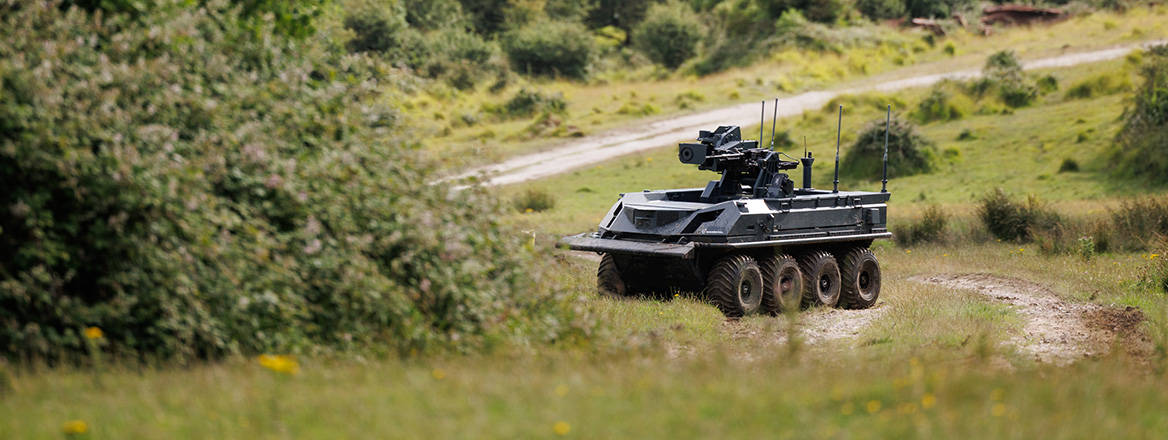Uncrewed Ground Systems: Organisational and Tactical Realities for Integration
Military experimentation with uncrewed ground systems (UGS) is happening apace. Bomb disposal robots have been in service with armed forces for decades. Now, systems with greater capabilities and autonomy are being developed and tested.
Potential uses include carrying cargo, casualty evacuation, reconnaissance, chemical-agent detection, communications and fire support. However, the gap between ideal uses and present technical capability is significant. The delivery of systems to where they will be used, the realistic uses once there and the machines’ interactions with soldiers have frequently been underexamined but are crucial to how UGS will form part of land forces and offer genuine operational advantage. The technical limitations of UGS must be reflected in how they are task-organised within land forces. Due consideration must be given to how UGS will move around the battlefield, as it will often not be by their own steam. Maintenance and repair of UGS will require new training courses and a close relationship with industrial partners.
The principal conclusion to draw is that UGS will require significant support from their human counterparts. Moreover, cognitive burden on operators must be considered and managed. Systems move slowly, and the difficulty of navigating in complex terrain means they are not suited to some of the tasks for which they have been proposed, such as dismounted close combat in complex terrain. It is important to involve as many soldiers as possible in experimentation, and expose them to UGS early and often. This can be achieved by employing UGS in those areas with the highest throughput of soldiers, such as firing ranges and exercise areas, and making use of simulation. In addition, initial training should include education and demonstrations of UGS for new recruits. This will help build familiarity, favourability and trust in these systems.
The potential of human–machine teams is significant, but hype should not disguise the limitations of UGS and the difficulty of integrating new technology into established structures.
Recommendations
- Role and management: Due to current technical limitations, UGS should be employed in standoff roles and in rear areas, where there is a dividend for their use. Treating larger UGS like aircraft whose support can be bid for will allow supply and demand to be managed, as well as keeping UGS from burdening low-level formations.
- Force design: The extra demand UGS will place on engineers and enablers (the invisible tail) needs to be baked into force planning now. The management of UGS may, in fact, require more soldiers.
- Logistic burden: The transport and storage of UGS, and battery management, must be planned for in detail, accepting that it cannot simply be added on to existing commitments, which would further stretch scarce resource. This will ensure the force-wide implications of new technology are catered for adequately.
- Education: Education and training related to UGS should be implemented now, while experimentation is ongoing, rather than waiting until systems are formally brought into service. Basic training should include education on UGS now, even in a basic form, to begin to build trust and familiarity, easing the integration of UGS at scale.
- Experimentation: UGS trials should be integrated into those areas with a significant throughput of soldiers, such as firing ranges. Moreover, it should be ensured that the totality of UGS experimentation and activity is understood by decision-makers and those conducting the experimentation, and that leaders maintain engagement with projects throughout the life cycle, rather than at the beginning and end. Clear ownership of the whole ecosystem is vital, while encouraging bottom-up engagement will create a user base ready to make best use of UGS.
WRITTEN BY
Major Patrick Hinton
Former Chief of the General Staff’s Visiting Fellow
Military Sciences
- Jim McLeanMedia Relations Manager+44 (0)7917 373 069JimMc@rusi.org


